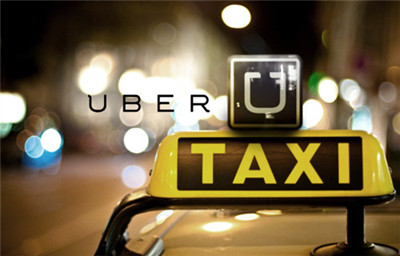Surge pricing also boosts supply, at least locally. The extra money is shared with drivers, who therefore have an incentive to travel to areas with high demand to help relieve the crush.
至少在局部地區動態價格策略增加了供給。司機們可平分額外費用,這使得他們愿意開車到需求高的地方拉客,這有助于緩解交通擁堵。

A recent analysis published by Uber illustrates how the system is intended to work. Jonathan Hall, head of economic research at Uber, Cory Kendrick, a data scientist at the firm, and Chris Nosko, of the University of Chicago, compared two high-demand cases in New York city to illustrate how surge pricing is intended to work. In March 2015 it kicked in after a sold-out concert by Ariana Grande, a singer, in an arena in the middle of Manhattan. As the show came to an end, the number of people in the area opening the Uber app quadrupled in just a few minutes. Uber's algorithm swiftly applied surge pricing; the average waiting time for a car rose only modestly, while the “completion rate”—the share of requests for rides that are met—never fell below 100%. On New Year's Eve in 2014, in contrast, Uber's surge-pricing algorithm broke down for 26 minutes, leaving New York without surge pricing. The average wait time for a car soared from about two minutes to roughly eight, while the completion rate dropped below25% (see chart).
優步最近的一項分析解釋了峰時價格工作的機制。優步的經濟研究部主管約翰遜·霍爾、數據研究員科里·肯德里克還有芝加哥大學的克里斯·諾斯克比較了紐約兩個高需求的案例以說明峰時價格的作用機制。2015年3月,愛莉安娜·格蘭德在曼哈頓中央舉辦了一場演唱會,在這場門票銷售一空的演唱會之后,峰時價格機制開始起作用。當演唱會接近尾聲,僅幾分鐘內這個地區打開優步app的人數就是之前的四倍。優步的計算程序很快地啟動了峰時價格機制;每輛車的平均等待時長只增長了少許,然而完成率——打的份額的完成度從沒降到100%以下。相比之下,2014年新年除夕夜峰時價格機制崩潰了整整26分鐘,致使紐約處于無峰時價格狀態。每輛車的平均等待時長從兩分鐘漲到了八分鐘,而完成率降到了25%以下。(見表格)
The comparison may overstate the power of surge pricing. Even without the help of algorithms, cab drivers know to converge on a venue as an event finishes; more Uber drivers than normal were surely in the area at the end of Ms Grande's concert in expectation of the extra business. Yet the possibility of earning a surge fare may also strengthen drivers' incentives to anticipate and respond pre-emptively to high demand. Ironically, the better Uber's surge-pricing algorithm works, the less the company will need to use it, since drivers' pre-emptive responses will tend to eliminate the demand imbalances that make surge pricing necessary in the first place.
這個對比可能夸大了峰時價格機制的作用。即使沒有程序的幫助,司機們也知道如何在一場盛事結束后自行往利益靠攏;格蘭德的演唱會結束時,沖著生意比以往多,這個地區的司機也比以往更多。趁價格處于峰時來賺取更高利潤的機會激發司機們對高需求做出預測并先下手為強。諷刺的是,優步的峰時價格機制的作用越好,公司對其需求卻越少,因為司機會先下手為強,這樣就會消除供需不平衡,而峰時價格機制只有在供需不平衡時才會起作用。
There are tantalising hints that Uber hopes to follow this logic to its conclusion. Mr Schneider noted that clever machine-learning tools could process Uber's piles of data and determine when and where demand is likely to outstrip the supply of cars. There would be no need to wait until demand starts to rise, nor for drivers to scan concert schedules. The ability to anticipate demand would be of some use to Uber today: it could tell drivers where they are likely to be needed. But they would presumably not respond as rapidly as they do to the inducement of surge fares. Eventually, however, Uber hopes to replace its human drivers with autonomous vehicles, which could be directed around the city by the company's computers without any pecuniary incentives. (The company still has an incentive to maximise earnings, though, so it might opt to keep surge pricing even if technology made it redundant, at the risk of further public rage.)
但是總會有一些似有若無的暗示表明優步希望繼續采用這樣的機制。施耐德就指出過精明的機器研究工具能夠處理優步的數據堆并且能夠預測出乘車需求大于供給的時間和地點。無需等待需求上漲亦無需司機查看演唱會的日程。對如今的優步來說預測需求的能力是極有用的,因為司機可以知道哪些地方需求比較大。但是他們對于需求的反應可能沒有對價格上漲的誘惑反應快。然而優步的最終目標是用自動駕駛來取代人類司機,這樣的話公司便可以通過計算程序來操控,這樣就不用受到金錢誘因的影響了。(然而公司還是有可以使利潤最大化的激勵機制,所以它還會保留峰時價格機制,即使這個機制會在技術的發展下變的多余,而且還會引起眾怒。)
Apps and downs
應用軟件的起伏變動
Whether Uber remains a big part of the transport network in future, and whether it retains surge pricing, depends in part on how well local governments manage the transport system as a whole. In districts or cities where travellers have appealing alternatives, in the form of good public transport or private competitors to Uber, users will be more sensitive to price. Surge pricing will therefore not generate a big financial windfall for Uber (or its drivers). But where public transport is thin on the ground, or where Uber has little private competition, it is a different story. In other words, surge pricing is really only as painful as local officials allow it to be.
未來優步是否能保持網絡交通巨頭之一的地位,是否繼續保留峰時價格機制,都部分取決于當地政府能否統籌交通系統。在那些出行者可以有替代出行方式的街道和城市,比如運作良好的公共交通系統和像優步這樣的私營競爭者,他們對價格也更加的敏感。因此峰時價格并不會讓優步(或者其司機)坐享其成。但是在那種公共交通不發達地區或者優步的競爭者很少的地方,將會是另一番景象。換句話說,峰時價格機制的可恨程度取決于當地政府。翻譯:李晶晶&周瑋 校對:李晶晶












